Spacecraft Dynamics and Control

Scope
As an application branch of dynamics and control discipline, spacecraft dynamics and control aims to develop effective alternatives to guarantee the stable and reliable on-orbit behaviours of spacecraft at all stages. Spacecraft dynamics and control has a clear application background and distinctive interdisciplinary characteristics. Nowadays, spacecrafts are becoming increasingly diversified, where small satellites, large space structures and mega constellation are paralleled research interests. Besides, spacecrafts are working in the multi-field coupling, nonlinear, extreme environment, which requires further research on the spacecraft dynamics and control.
This feature topic solicits papers focusing on the role spacecraft dynamics and control will play in advancing the human’s exploration in the near-earth region as well as deep space, endeavouring to identify critical issues and provide feasible solutions among this field. Areas of interest include, but are not limited to, the following:
- Orbit dynamics and control
- Multi-body dynamics and trajectory optimization
- Attitude dynamics and control
- Vibration suppression and isolation
- Space trajectory optimization
- Orbital pursuit-evasion game
- Mega constellation design and control
- On-orbit assembly of large space structures
- Dynamics and control in manned space mission
- Dynamics and control of space robots
- Dynamics and control of debris removal
- Dynamics and control of deep-space exploration
- Dynamics and control of asteroid defence
- Space situation awareness
- Intelligent manipulation of non-cooperative targets
- Formation flight and spacecraft cluster control
- Utilization of Earth-Moon Space
- Artificial intelligence applied to the dynamics and control of spacecraft
Guest Editors
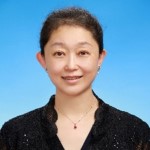 Jingrui Zhang received her B.S.E and M.S.E from Harbin Institute of Technology in China, her Doctor’s Degree from Université de Picardie Jules Verne in France. She ever worked as a postdoctoral researcher in department of engineering mechanics of Tsinghua University. Now she is the Director of the Distributed Spacecraft System and Technology Laboratory and full professor at Beijing Institute of Technology. She served as the Guest Editor of Acta Astronautica in 2018 and currently works as the associate editor of Transactions of the Japan Society for Aeronautical of Space Sciences (JSASS) and Editorial Board Member of Space: Science & Technology. She was awarded the National Science Fund for Distinguished Young Scholars (2018), Star of the Science and Technology Innovation Award of the “863 Plan” (2016), the Sixth National Excellent Science and Technology Workers Award (2014), the Fifteenth Mao Yisheng Beijing Youth Science and Technology Award (2012). Her research interests include spacecraft dynamics, attitude control, vibration suppression and orbit guidance, navigation and control with application to spacecraft on-orbit service and space debris.
Jingrui Zhang received her B.S.E and M.S.E from Harbin Institute of Technology in China, her Doctor’s Degree from Université de Picardie Jules Verne in France. She ever worked as a postdoctoral researcher in department of engineering mechanics of Tsinghua University. Now she is the Director of the Distributed Spacecraft System and Technology Laboratory and full professor at Beijing Institute of Technology. She served as the Guest Editor of Acta Astronautica in 2018 and currently works as the associate editor of Transactions of the Japan Society for Aeronautical of Space Sciences (JSASS) and Editorial Board Member of Space: Science & Technology. She was awarded the National Science Fund for Distinguished Young Scholars (2018), Star of the Science and Technology Innovation Award of the “863 Plan” (2016), the Sixth National Excellent Science and Technology Workers Award (2014), the Fifteenth Mao Yisheng Beijing Youth Science and Technology Award (2012). Her research interests include spacecraft dynamics, attitude control, vibration suppression and orbit guidance, navigation and control with application to spacecraft on-orbit service and space debris.
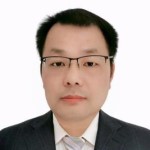 Shuang Li received his B.S.E, M.S.E, and Ph.D. degrees all in the spacecraft design from the Department of Aerospace Engineering at Harbin Institute of Technology, China, in 2001, 2003, and 2007, respectively. Since 2007, he has been with the College of Astronautics, Nanjing University of Aeronautics and Astronautics, China, where he is a full Professor and the founding director of Advanced Space Technology Laboratory (ASTL) now. His research interests include spacecraft guidance navigation and control (GNC), astrodynamics, space mission design and analysis. He has been the author of over 120 articles in reputable journals and conference proceedings. He is an Associate Editor for Journal of Spacecraft and Rockets and Astrodynamics, and editorial board member of Space: Science & Technology, Chinese Space Science and Technology, Journal of NUAA, Journal of Deep Space Exploration, and Flight Control & Detection. He served for Acta Astronautica as Guest Editor for a special issue (Fourth IAA Conference on Dynamics and Control of Space Systems) and a special section (Special Section on 9th China Trajectory Optimization Competition).
Shuang Li received his B.S.E, M.S.E, and Ph.D. degrees all in the spacecraft design from the Department of Aerospace Engineering at Harbin Institute of Technology, China, in 2001, 2003, and 2007, respectively. Since 2007, he has been with the College of Astronautics, Nanjing University of Aeronautics and Astronautics, China, where he is a full Professor and the founding director of Advanced Space Technology Laboratory (ASTL) now. His research interests include spacecraft guidance navigation and control (GNC), astrodynamics, space mission design and analysis. He has been the author of over 120 articles in reputable journals and conference proceedings. He is an Associate Editor for Journal of Spacecraft and Rockets and Astrodynamics, and editorial board member of Space: Science & Technology, Chinese Space Science and Technology, Journal of NUAA, Journal of Deep Space Exploration, and Flight Control & Detection. He served for Acta Astronautica as Guest Editor for a special issue (Fourth IAA Conference on Dynamics and Control of Space Systems) and a special section (Special Section on 9th China Trajectory Optimization Competition).
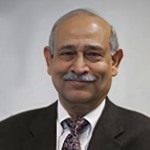 Arun K. Misra received his Bachelor’s Degree and Doctor’s Degree from Indian Institute of Technology and University of British Columbia, respectively. Currently, he is the Thomas Workman Professor and ever worked as chairman in the Department of Mechanical Engineering, McGill University, Canada. He is also the member of Canadian Academy of Engineering (CAE) and International Academy of Astronautics (IAA). He won the Distinguished Service Award of International Astronautical Federation (IAF) in 2016, was elected as a Fellow of American Institute of Aeronautics and Astronautics (AIAA) in 2012, was elected as the Fellow of American Astronautical Society (AAS) in 2005. He works as the Associate Editor of Acta Astronautica, the Editorial Board Member of Journal of Aerospace Engineering, and ever served as the Associate Editor of Journal of Guidance, Control and Dynamics. His research interests are in the areas of satellite dynamics and control, space robotics, and dynamics of aerospace structures. The current focus is on the study of active space debris removal using robots, dynamics of tethered space systems, spacecraft motion in the vicinity of asteroids, formation flying of satellites, and space elevator.
Arun K. Misra received his Bachelor’s Degree and Doctor’s Degree from Indian Institute of Technology and University of British Columbia, respectively. Currently, he is the Thomas Workman Professor and ever worked as chairman in the Department of Mechanical Engineering, McGill University, Canada. He is also the member of Canadian Academy of Engineering (CAE) and International Academy of Astronautics (IAA). He won the Distinguished Service Award of International Astronautical Federation (IAF) in 2016, was elected as a Fellow of American Institute of Aeronautics and Astronautics (AIAA) in 2012, was elected as the Fellow of American Astronautical Society (AAS) in 2005. He works as the Associate Editor of Acta Astronautica, the Editorial Board Member of Journal of Aerospace Engineering, and ever served as the Associate Editor of Journal of Guidance, Control and Dynamics. His research interests are in the areas of satellite dynamics and control, space robotics, and dynamics of aerospace structures. The current focus is on the study of active space debris removal using robots, dynamics of tethered space systems, spacecraft motion in the vicinity of asteroids, formation flying of satellites, and space elevator.
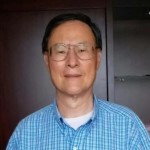 Hsien-Yang Yeh received his B.S.E. degree from Cheng Kung University, his Master’s degree in Applied Mathematics from Brown University, his Master’s degree in Engineering Mechanics from Columbia University, and his Ph.D. in Composite Materials from the University of Southern California. He is now the professor of emeritus in the Mechanical and Aerospace Engineering Department at California State University, Long Beach. His research interests include mechanics of composite materials, fracture mechanics, and structural failure analysis.
Hsien-Yang Yeh received his B.S.E. degree from Cheng Kung University, his Master’s degree in Applied Mathematics from Brown University, his Master’s degree in Engineering Mechanics from Columbia University, and his Ph.D. in Composite Materials from the University of Southern California. He is now the professor of emeritus in the Mechanical and Aerospace Engineering Department at California State University, Long Beach. His research interests include mechanics of composite materials, fracture mechanics, and structural failure analysis.
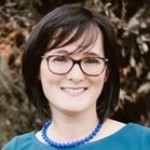 Camilla Colombo received her Master’s degree in Aerospace Engineering from Politecnico di Milano (Italy) in 2005 and her Ph.D. in Aerospace Engineering from the University of Glasgow (UK) in 2010. Currently, she is the Associate Professor in Orbital Mechanics at Politecnico di Milano and the Principal Investigator of the COMPASS project. Before that she was Associate Professor and Lecturer at the University of Southampton till Jul 2016. She became the Member of the American Institute of Aeronautics and Astronautics (AlAA) in 2006 and the Member of the Societa Italiana di Meccanica Celeste e Astrodinamica (SIMCA) in 2009. She also works in the Inter Agency Debris Coordination Committee and the UN mandated Space Mission Planning Advisory Group for mission to asteroids, and serves as the associate editor of the Journal of the Astronautical Sciences. She was awarded a Marie Curie grant in 2013. Her research areas are among orbital dynamics, trajectory design and optimisation, dynamical system analysis and control, and space mission analysis and design.
Camilla Colombo received her Master’s degree in Aerospace Engineering from Politecnico di Milano (Italy) in 2005 and her Ph.D. in Aerospace Engineering from the University of Glasgow (UK) in 2010. Currently, she is the Associate Professor in Orbital Mechanics at Politecnico di Milano and the Principal Investigator of the COMPASS project. Before that she was Associate Professor and Lecturer at the University of Southampton till Jul 2016. She became the Member of the American Institute of Aeronautics and Astronautics (AlAA) in 2006 and the Member of the Societa Italiana di Meccanica Celeste e Astrodinamica (SIMCA) in 2009. She also works in the Inter Agency Debris Coordination Committee and the UN mandated Space Mission Planning Advisory Group for mission to asteroids, and serves as the associate editor of the Journal of the Astronautical Sciences. She was awarded a Marie Curie grant in 2013. Her research areas are among orbital dynamics, trajectory design and optimisation, dynamical system analysis and control, and space mission analysis and design.
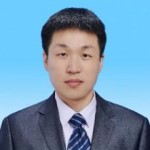 Han Cai received his Master’s degree in Aerospace Engineering from Beijing Institute of Technology in 2015, and his Ph.D. in Geospatial Science from the RMIT University, Australia in 2019. He was worked as a postdoc research fellow at the Oden Institute in the University of Texas at Austin, U.S.A, from 2019 to 2021. Currently, he is an assistant professor at School of Aerospace Engineering, Beijing Institute of Technology. His areas of expertise are in space situational awareness, multi-target tracking, sensor tasking, information fusion, and orbit determination.
Han Cai received his Master’s degree in Aerospace Engineering from Beijing Institute of Technology in 2015, and his Ph.D. in Geospatial Science from the RMIT University, Australia in 2019. He was worked as a postdoc research fellow at the Oden Institute in the University of Texas at Austin, U.S.A, from 2019 to 2021. Currently, he is an assistant professor at School of Aerospace Engineering, Beijing Institute of Technology. His areas of expertise are in space situational awareness, multi-target tracking, sensor tasking, information fusion, and orbit determination.
Submission Instructions
Please select "Spacecraft Dynamics and Control" as the section/category during the submission process. Please indicate in your cover letter that your submission is intended for inclusion in the special issue.
Submission Deadline: June 30, 2023
Table of Contents
As articles within the special issue are published they will appear below.
